Shaping the Future
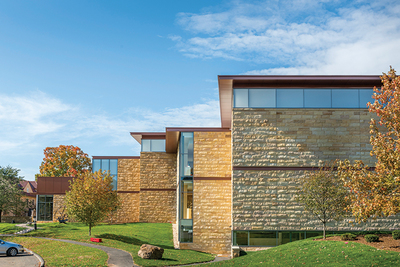
New Britain Museum of American Art. Photo: © P. Vanderwarker.
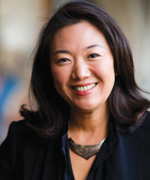
Min Jung Kim.
American Art in the 21st Century: Building Bridges, Not Walls
Min Jung Kim
“One of the most American traits is our urge to define what is American. This search for a self-image is a result of our relative youth as a civilization, our years of partial dependence on Europe. But it is also a vital part of the process of growth.”
—Lloyd Goodrich, What Is American in American Art? (1958)
The New Britain Museum of American Art (NBMAA) is the oldest museum dedicated to American art in the country. Originally a part of the New Britain Institute—an organization established by the city founders in 1853 to foster learning in a community of new immigrants—the museum was founded in 1903 with a gift of $20,000 worth of gold bonds given by John Butler Talcott, the former New Britain mayor. Talcott’s gift, intended specifically for the purchase of “original modern oil paintings,” took place in the context of a civic and cultural consciousness that began to develop in the first part of the 19th century in prosperous cities in the Northeast and gradually spread throughout the country. The Wadsworth Atheneum was founded in 1842 in Hartford, which was at the time one of the largest, wealthiest and most prominent cities in the country. New York’s Metropolitan Museum was established in 1870 and the Art Institute of Chicago in 1879. What made the Talcott gift unique was it paved the way for the NBMAA to focus exclusively on American art. From the beginning, the Wadsworth, the Met and the Art Institute were intended to be both symbolic reflections of community stature and authentic programs to educate a wider public audience, principally on the virtues of Western thinking and Western values. Classical antiquity and the Renaissance were the touchstones and foundations from which these new institutions drew their inspiration.
New Britain’s initiative, differentiating it from other museums of the time, simultaneously expanded and focused the institutional discourse. While it may have been vaguely understood or acknowledged by its newly minted citizenry that the United States was a nation of immigrants, its cultural aspirations, by and large, were decidedly European. By the end of the 19th century, however, the nation’s emerging identity was producing its own distinct achievements in the visual arts, in literature and in architecture. Accordingly, the NBMAA began to assemble a fine collection, which now includes excellent examples of colonial and federal portraiture, the Hudson River School, the American Impressionists, the Ash Can School and Regionalist painting. Celebrated masterpieces by John Singleton Copley, Charles Willson Peale, Gilbert Stuart, Thomas Cole, Albert Bierstadt, Frederic Church, Maurice Prendergast, Mary Cassatt and Thomas Hart Benton, among many others, are the focal points of its permanent collection.
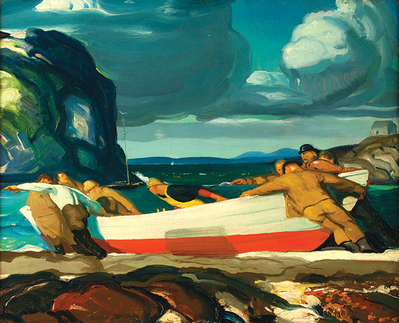
George Wesley Bellows, The Big Dory, 1913, oil on wood panel.
By the early 20th century it also became clear that New Britain—while not as wealthy as its next-door neighbor (Hartford) though with even proportions of immigrant residents, disproportionately drawn to the labor opportunities in manufacturing—was a particularly ripe territory to embrace an emerging nativist identity. Since the founding of the new republic, there existed throughout the country a need to foster a collective American identity. As the noted historian Gordon S. Wood observes in his article “The Significance of the Early Republic,” “The United States was founded on a set of beliefs and not, as were other nations, on a common ethnicity, language or religion.” As a result, modes of persuasion were required, as was a visual rhetoric. According to art historian Paul Staiti in the book Shaping the Body Politic: Art and Political Formation in Early America, art was often employed to present “a new United States to its new citizens, who were understandably perplexed by, or outright resistant to, the urgent demands of a singular national identity that requested they set aside entrenched local allegiances, or at least allow regional identities to perforate enough as to let the national enter.” This proved to be true not just in the 18th and 19th centuries, but also at the turn of the 20th century when the museum was founded. In short, the NBMAA was uniquely positioned to reflect the new, unifying and “American” visual rhetoric at a time when the United States was absorbing a large influx of immigrants from Europe: Irish and Germans, followed by Italians and then Eastern Europeans. Large numbers of Polish immigrants arrived in New Britain, drawn to opportunities to work in the manufacturing industries for companies such as Stanley Bolt Manufactory and Stanley Rule and Level Company.
Over time, however, things have changed. In the early 21st century, not only has the demographic makeup of New Britain’s population become increasingly Hispanic or Latino, reflecting a demographic shift that is indicative of what is occurring throughout the United States, but also the issues of gender, race and ethnic pride have signaled a new direction for “American” culture in general. The new and emerging national cultural identity is no longer an extension of the 19th century unifying “American” values that have served this nation so well for the last 200 years or so. And the new “American” identity is no longer focused on the middle swath of North America. To be truly “American” now means to embrace a hemispheric, and perhaps ultimately, global diversity.

Robert Henri, Spanish Girl of Segovia, 1912, oil on canvas, 40 3/4 x 33 1/8″.
All above images courtesy of New Britain Museum of American Art.
Abraham Lincoln’s invocation of “the better angels of our nature” in his first inaugural speech is as appropriate now as it was a century and a half ago, and it signals a continuing direction for the New Britain Museum. As the oldest museum of American art in the country, the NBMAA has an obligation to reflect, through its exhibitions and its collections, a national identity that is neither monolithic nor homogenous, but one that comprises a multiplicity of cultures, races and ethnicities. It is what makes us American. To build walls, separating ourselves from the global cultural exchanges that throughout this country’s history have helped define who we are as a nation today, would mean fragmentation of our own collective identity that we have strived so hard to formulate. Rather, the NBMAA will take a leadership role in painting the picture of American art of the 21st century as one of rich and varied diversity. It is the cultural heritage evident in the histories of cities such as New Britain, as well as other small towns and large urban centers, that collectively tell a quintessentially American story. The American story and our national identity, which is the sum of innumerable other cultural identities, are best told by artists who are Polish American, Latin American, African American, Asian American and Arab American. Or, simply put, All-American.
Min Jung Kim is director and CEO of the New Britain Museum of American Art.
New Britain Museum of American Art
New Britain, CT
nbmaa.org

Grizzly bear claw moccasins, 1870s, Sioux (likely Yanktonai Dakota), buffalo rawhide, sinew, glass beads, metal, horsehair, deerskin, grizzly bear claws and hide, wood cloth, pigment. Courtesy of Fleming Museum of Art, University of Vermont, Ogden B. Read Collection.
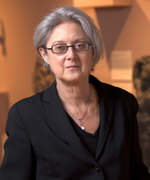
Janie Cohen.
Museums and our Collections: Expanding their Creative Use
Janie Cohen
Collections are the heart of every museum. But for museum professionals and for those who follow museums closely, we know that while collections were once at the center of our mission statements, over the past 30 years, the spotlight has shifted first to education, and more recently, to public engagement. Now museum directors and funders look beyond the objects to the activities that orbit around them. As important as caring for the collection is, our mission is no longer just a matter of what we do, but for whom and why.
Within New England, our museum collections are enormously diverse, including objects related to the history of fly-fishing, Plains Indian artifacts, old master paintings, American folk art, Jurassic-era skeletons, botanical specimens crafted of blown glass, military portraits composed of common insects, contemporary American art and 9th-century BCE Assyrian stone reliefs from the palace of Ashurnasirpal II at Nimrud, to name just a few. Many of our museums—from UVM’s Fleming Museum and Dartmouth’s Hood Museum to the Boston MFA—hold collections of encyclopedic range. Our collection histories are equally diverse.
Collections are built mainly through purchases, gifts, bequests and transfers (from another department on a college campus or from another museum). Best practices have evolved over time, along with societal changes and professionalization of the field. In the 1950s, the French artist Jacques Lipchitz visited the Fleming and introduced himself to the curator. He wanted to trade a drawing of his own for an extra example of a Native American artifact on view, should we happen to have one. Yes, we did. Today trades happen rarely and chiefly between museums. Most objects are purchased at auction or through an art dealer. In the late 19th century, world fairs and expositions, such as the 1893 World’s Columbian Exposition in Chicago, offered a global marketplace where museums could expand their collections.
Objects enter museum collections with their own cultural, historical or contemporary role. In the 20th century, for example, these might have included war booty; souvenirs from the Grand Tour; objects that were seen to justify a colonialist and imperialist campaign; artifacts from anthropological excavations; pieces that represent a specific art historical movement or historical moment; works that diversify cultural or gender representation in a collection; objects that support curriculum in a specific discipline and artistic excellence. (It is an aspiration on all of our parts that the latter category is a given for every work that we acquire.)
Now that we have built our collections, the question becomes: What next? What might we ask of our collections as we hold them in perpetuity and the centuries march on? What can artworks, artifacts and material culture teach us as we find ourselves shin-deep in the 21st century? Are there new roles that collections might play in our lives? In our communities? Do we need to change our collecting parameters in response to changes in our world?
Creativity is what we traffic in. Creativity has begun to be valued more broadly in society. Employers hire for it even in fields where one would not expect it; chambers of commerce market “creative community” to attract businesses and homebuyers; and artists are celebrated for their creative problem solving. Museums have long been seen as sources of creative inspiration, but collections can be used in even more innovative ways to inspire and teach creativity across a broad range of industries, walks of life and demographics. One way to do this is to share the curatorial experience. University and college museums have increasingly involved students in curating. The Fleming Museum’s eclectic collection has proven to be an immeasurably rich resource for thematic student-curated exhibitions that include fine art, anthropological artifacts, material culture, decorative arts, clothing and textiles and more from cultures around the world. Recent course-curated exhibitions on gender and sexuality and the social aspects of food, for instance, have proven transformative for undergraduate students. What if, over time, museums extended curatorial opportunities to the public, offering the means to become involved in what we know to be an extraordinary creative activity? If we examined the curatorial experience (and our stewardship mandate) to figure out what is scalable to a broader audience, the creative act of telling stories through objects might become a public experience. Online exhibitions make this doable, but the experience of working with objects makes it unforgettable.
Most museum directors, curators and educators have art historical training, but might we expand the creative value of our collections if we’re able—even occasionally—to loosen the object from its historical context? One of the most unusual and memorable exhibitions I have seen was Vik Muniz’s 2008 Artist’s Choice installation titled Rebus at the Museum of Modern Art. Diverse objects from various departments within the museum were mounted in a minimalist, linear presentation around the gallery. Each work related in some way to the works on either side of it. There were no labels, and it was up to the viewer to discover the connections, which included subject, form, material, color or more esoteric aspects of the work’s content or meaning. Removing the works from their historical and cultural context did not diminish them; the new context provided a jolt that was creatively inspiring.
In an upcoming project, the Fleming will be inviting an artist to create an “open storage installation”—part sculpture, part storage—to be located in the adaptive reuse of an old school, designated for the art and art history department, adjacent to the UVM campus. The museum gains storage space, an artist receives a commission, students and the public gain access to museum collection objects rarely on view and we all have the pleasure of a new creative work in our midst. As in Muniz’s Rebus, collection objects serve as the artist’s creative medium. But in this case, information will be provided on the individual objects as well as on the installation.
While artists working creatively with collections is not a new concept, I would like to see artists playing a role in helping us to imagine and design new ways for our audiences to interact with collections. We currently use our collections to tell stories about the objects themselves: their histories, cultural contexts, materials and makers. Maybe it’s time that museums, aided by creative collaborators, begin thinking more openly about using collections to facilitate very different kinds of stories, generated by other storytellers.
Janie Cohen is director of the Fleming Museum of Art at the University of Vermont, in Burlington.
Fleming Museum of Art
Burlington, VT
uvm.edu/~fleming

Claude Monet, Spring in Giverny, 1890, oil on canvas, 25 1/2 x 31 7/8″.

Olivier Meslay. Photo: Tucker Bair. Both images courtesy of Clark Art Institute.
Museums and Nature
Olivier Meslay
For centuries, nature has been one of the most favored subjects for painters. Landscapes abound in our galleries, and museums are now a repository of human attitudes toward natural or humanized scenery. If someone wants to take a journey through 500 years of landscape and nature as seen through human eyes, museums—including the Clark Art Institute—are probably the best place to start. Museums are a place where we can reconsider our relationship with nature, not only by viewing paintings on the walls of our institutions, but also by utilizing the museum as a classroom and a forum where ideas and attitudes can be shaped and debated in consideration of our relationship to our natural environment.
Renaissance painters paid little attention to nature, preferring to focus on historical or religious subjects. This was a reflection of the general relationship to nature at the time. While the usable part of the land was seen as an asset, a status symbol and a productive tool, the unproductive part was considered a burden at best or, worse, a threat. Mountains, deep forests, abysses and wildernesses were frightening. Painters usually confined the landscape to a subsidiary role; in Renaissance paintings, we can only enjoy small glimpses of fields or imaginary rural scenes tucked behind a draped or armored shoulder.
At the end of the 16th century, and even more at the beginning of the 17th century, painters began looking at nature and composing almost pure landscapes on their canvases. I say “almost pure” because there is always a pretext—in a corner, in the background, a tiny figure gives us a clue: It is Jacob or Tobias not far from the angel, or if you are lucky, you recognize Diogenes. There were two traditions emerging at this moment: the northern one in which painters were attentive to details, to plants, to trees, to a more natural environment; and a southern one, mainly in Italy, in which painters such as Claude Lorrain and Nicolas Poussin considered an ideal concept of nature as one domesticated by mankind and history. As the idea of a rational and balanced beauty bloomed, the prevailing sentiment drifted toward the notion that men rule the world—although they are not gods, men rule the earth and nature should obey, at least in the parts of the world they knew and domesticated.
There were, however, still a lot of unknown territories. They would be explored largely, if not necessarily in detail, at the end of the 18th century. The Enlightenment was a moment of confidence in human history, and this confidence was surprisingly related to the opposite feeling: the one created by the effects of the sublime. The most enlightened people were suddenly delighted to be afraid of darkness, infinity and the unknown. Mary Shelley would soon create Frankenstein’s monster, a denial of enlightenment. At the same moment, a landscape painter was probably the best explorer of these very different attitudes. Between beauty and the sublime, between Claudian attitude and the vertigo created by infinity, J. M. W. Turner would succeed at reaching the two extreme points of this amazing rainbow of landscape painting.
This too-quick survey of the notion of landscape in the European painting tradition seems to be isolated in art history without any link to our natural environment or without any benefit to our reflection on the current state of our relationship with nature. At the beginning of the 19th century, the Industrial Revolution had just begun to take its toll on nature. It was still an age of innocence, however, and the 19th century still had a long way to go before realizing the disastrous effects of human behavior on the environment. Some artists such as John Constable and later the Impressionists, started to realize that nature in itself is amazing and needs to be respected in even its most humble manifestations. The most cultivated field is as dignified a subject as the canal and the lock.
The Impressionists were Parisians, in a country where pure wilderness has been domesticated almost everywhere for millennia. They were attracted by the suburban remainders of nature, with nothing wild in their landscape but an ineffable lure of the most ephemeral manifestations of natural beauty such as those found in a poppy field or in a line of poplars.
On this continent, American painters were exploring a very different world; while Claude Monet or Pierre-Auguste Renoir would take a day train to go to Argenteuil, painters like Frederic Edwin Church would stay days and months in the wilderness and in solitude. Their nature was still untouched and unspoiled but would soon need to be protected; their paintings would lead to the creation of America’s national parks. However, this creation would not be sufficient, as shown by painters like Alexandre Hogue or photographers like Arthur Rothstein, who in the 1920s and ’30s captured the consequences of human exploitation as it continued to wreak havoc on their environment. The latter landscapes—better described now by photographers like David Maisel and Edward Burtynsky—are appalling.
At the Clark Art Institute, these notions and this evolution can be seen and studied in detail, not only in the galleries but also outdoors. The Clark is probably one of the very few places, if not the only place, in this country where one can see works by Claude Lorrain or Camille Pissarro, by Adam Pynacker or Winslow Homer—while glimpsing through the windows at the surrounding forest and beautiful hills of the Berkshires. As one of the best resources available to the public, museums must play an educational role in environmental studies, and they must help create awareness. Inside a museum, one can trace the quickly forgotten history of the relationship between humankind and nature. But museums must also be consistent; they must be respectful and thoughtful about their impact on the world. Museums are often large buildings or complexes, and these facilities themselves can have detrimental effects on their surroundings. In much the same way that museums are stewards of the collections they hold, museums today need to ensure that we are also working as stewards of our environment––reducing to a minimum our material impact on our environment.
We are in a place to enjoy, think and reflect on nature, and we must have a respectful attitude about our environment. We are only just beginning.
Olivier Meslay is the Felda and Dena Hardymon Director of the Clark Art Institute.
Clark Art Institute
Williamstown, MA
clarkart.edu

Bahar Behbahani, Let the Garden Eram Flourish, from the Let the Garden Eram Flourish series, 2016, mixed media on canvas. Courtesy of the artist. © Bahar Behbahani. Photo: Adam Reich.
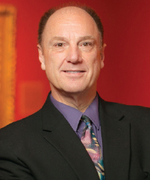
John Stomberg. Photo: Robert Gill. Courtesy of the Hood Museum of Art.
The Responsive Museum
John Stomberg
We hear it a lot: “The world is globalizing.” But what, exactly, does that mean? It certainly responds to the idea that societies around the world have ready access to each other as never before, and that this exchange can be felt in everything from the food we eat to the music we hear. Further, hybridization has become the norm across the spectrum of cultural output. We can think of Paul Simon singing with Ladysmith Black Mambazo or restaurants that feature French/Cambodian cuisine. The idea of globalizing also covers the tragic loss of local entities and identities in the wake of the relentless homogenization promulgated by world business. This take on the term covers the inexorable process by which first-world corporations trigger the eradication of traditional outlets for everything from shoes to haircuts. We should note, too, that this trend is complicated by the often open, and overlooked, embrace of these imports.
The international exchange of commodities and culture has multiplied at an unprecedented rate with the spread of the Internet. We now have access to the ideas of people from around the world—as they do to ours—without leaving our houses or offices. This has, to my mind, become an omnipresent characteristic of our current life. It is neither good nor bad; it simply is. We must accommodate our global community and learn to thrive creatively in the world in which we find ourselves now living.
And this brings us to the idea of a responsive museum. The original idea of the term “museum” was that it invoked a place of the “muses.” One visited works of art for an experience nearly divine in its combination of mystery and fulfillment. Museums were conceived to be enduring homes for artworks seen as transmitters of inspiration. The museum was a place that protected both the art and the visitors from the distractions of mundane pursuits. Echoing a process literally set in stone in ancient Athens, visitors ascended the steps of the museum to disengage from the everyday activities that carried on below.
It was in this context that the ideal of fixity emerged as a dominant value for museums, and the notion of a permanent collection evolved. This idea reflected a core belief that certain objects transcended the time and place of their making to become universal. By presenting rare and beautiful art in hallowed halls, the museum provided visitors with a combination of emotional sustenance and moral uplift in galleries designed to be otherworldly aesthetic refuges. The museum was a place to disengage from the complex shape-shifting present and take comfort in a linear narrative that foregrounded history as a series of discrete, comprehensible episodes.
Much of the axiomatic mode for presenting art was established at the dawn of art history as a scholarly discipline. The essential intellectual framework comprised schools and periods—that is, geography and chronology. Other than adding new chapters to the never-ending saga, this approach to presentation changed little for generations of museum professionals. Instead of challenging our visitors’ assumptions, we have been in the business of confirming knowledge. In this way, museums have not played the role in society that they could—we are missing an opportunity to encourage deep thinking and the embrace of ambiguity and complexity.
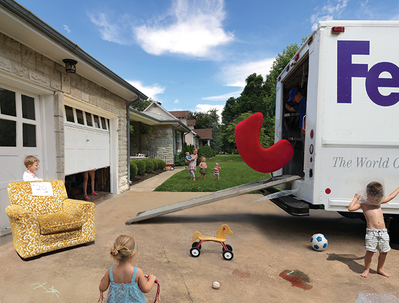
Julie Blackmon, New Chair, 2014, archival pigment print. © Julie Blackmon. Courtesy of Robert Mann Gallery.
This model is changing. Museums have had to recognize that history and its comprehension is fluid. While certainly there are enduring facts on which we base our work—from events to objects—our relationship to those facts changes regularly. The missing element has been relevance: Why does the Renaissance in Italy, the Tang Dynasty, ancient Egypt or Weimar Germany matter today? It is not enough to show that things happened; we museum professionals have to share our enthusiasm for engaging these myriad objects—and the ideas they embody—as a path to enrich life in significant ways.
How so? By exposing ourselves to the artistic output of others, we begin to normalize and even relish difference, ambiguity and complexity. We also acknowledge the vast shared values of people living across the globe and throughout the millennia of human experience. Time spent in a museum today is time spent in the presence of many voices with similar hopes and fears, as well as many alternative modes of conduct in addressing these. Human expression has been, and continues to be, colorful, rich, multivalent and varied.
For these reasons, when the Hood Museum of Art needed to close its main building for renovation, we opened a gallery dedicated to global contemporary art in a storefront on Main Street in Hanover, NH. This is not just art made by people who are alive today, but art that reflects in interesting ways on the state of our increasingly intertwined global community. These artists come from a variety of backgrounds—from Middle America to the Middle East. With distinct visions, they bring their knowledge of the local into the context of the global. Their art embraces tradition and change; they look inward at their own experience and outward at the evolving social and political realm that defines life today. We present this work, not as an answer or even a clear statement, but more as an open-ended invitation to engage intellectually and emotionally with individual artists, with their ideas, with the context of an art gallery on a college campus, with the idea of global contemporary art, and perhaps most importantly, with the context of an ever-evolving, often chaotic, even contradictory present.
This initiative will continue once the Hood reopens. The overarching theme for the galleries will be one world, many voices. While maintaining opportunities for moments of reverie, the new Hood will be a place for active engagement. The art installations and programs will be deeply connected to life outside the museum. It is no accident that the new entrance will be at ground level, directly accessible from the busy streets bounding the Dartmouth Green. The Hood will not turn its back on the world but rather face it directly. It will continue preserving the past and embracing the present, but it will also aspire to shape the future, by choreographing vital engagements for visitors with the finest works of art available. In short, the new Hood will be a responsive museum, deeply connected to the vital flow and exchange of beliefs and ideas that characterize the world today.
John Stomberg is the Virginia Rice Kelsey 1961s Director of the Hood Museum of Art at Dartmouth College.
Hood Museum of Art
Hanover, NH
hoodmuseum.dartmouth.edu
